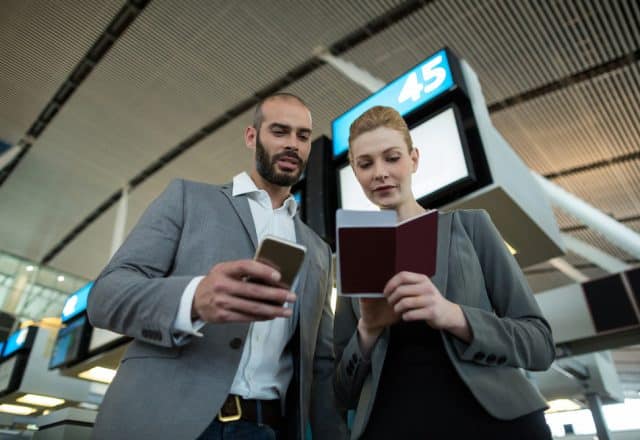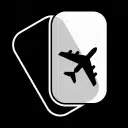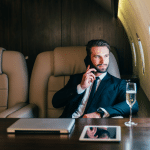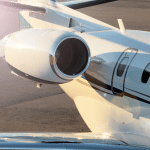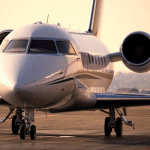Over 60 Business Travel Statistics (2022)
As more companies expand into the global market, the number of US business travelers traveling to other countries or states continues to rise every year. Business travel makes up a significant portion of the total amount of travel. In 2017, businesses spent $1.3 trillion on travel, and this number is expected to rise to $1.6 trillion in 2020.
One reason for this increase in business travel is the fact that companies are expanding, and a company travel policy works to ensure growth. Many corporate travelers also see business travel as a related opportunity for some leisure time, with many extending their trips after their business concludes.
If you want to take advantage of the stability of global business travel, you need to understand your customers and the market. We’ve compiled many of the most important statistics to give you a global overview of the industry and help you identify and predict global trends.
If you’re not interested in a deep dive, here are the most important statistics and facts you need to understand:
- 1.3 million people in the United States travel for business every day
- 45% of these travelers are women
- Experts predict the business travel sector will grow to $1.7 trillion in 2022
- Most business trips are domestic, with most being less than 250 miles in length. Only 7% of trips fly further than 1,000 miles
- Approximately 20% of all global business travel is work-related
How Many People Travel for Business Per Day?
In the United States, approximately 1.3 million people travel for work purposes every day, which means over 445 long-distance trips annually. (4) Several other business travel statistics suggest that there are an additional 420 million annual trips domestically.
While business passengers make up only 12% of an airline’s passenger count, they bring in 75% of the profit, thanks to more onboard spending and higher airfare. (4)
Currently, the fastest-growing business travel markets around the world are India, (11.3% growth) Indonesia (8.7% growth), Sweden (6.8% growth), Norway (6.6% growth), and China (3.9% growth). The global market share increased by 5.8% since 2016. (10)
Apart from airlines, hotels, and other accommodation providers benefit greatly from a large number of business travelers. These travelers make up 40% of total hotel guests, while Airbnb reports that more than 700,000 companies have taken advantage of its services to date. (10)
Who Travels the Most for Business?
While there are many regional differences in business travel statistics, there are some overall trends in US and European markets.
45% of work travelers in the US are women, while 55% are men. More than half of corporate travelers are over 45 years old, and 55% are between the ages of 30 – 49. In Europe, 50% of business travelers travel alone, while the other 50% travels in groups of two or more.
When it comes to profession, 53% of business travelers are people in professional, managerial, or technical roles. (7) Only 23% of business travelers are in service or sales positions.
Approximately 66% of all corporate travelers have a bachelors’ degree and an average household of $82,000, which corresponds strongly to the travelers having managerial or technical roles in their companies. (9)
Very few companies will spend money to send inexperienced or untrained employees on business travel, which explains why most corporate travelers have senior positions and trend towards being older, notably 45 and up.
How Have Millennials Changed Business Travel?
Millennials now represent the generation with the most buying power when it comes to leisure travel, and they have revolutionized business travel as well. Approximately 65% of all millennial travelers view business trips as a status symbol and tangible proof of their importance in a company. (4) Travel statistics suggest that as more millennials become business travelers, the industry will expand rapidly.
Many other millennial travelers like to use business trips as an excuse for a vacation, with 69% extending their business trips for leisure. 78% of millennials will make time for leisure during their business trip, even if they don’t extend their stay past the designated business trip period. For this reason, 56% of millennials make up reasons to go on business trips as often as possible, which has led to an average of four business trips per year. These bleisure trips are expected to rise as millennials make up a larger share of the business population.
However, millennial travelers may not be as profitable for airlines or hotels as their older counterparts. Many companies, especially in the tech industry, will book budget flights for employees instead of spending on business class seating to save money. Doing so means that airlines can no longer rely on all business passengers to be their primary source of income.
What are the Most Popular Business Travel Destinations?
Most business trips stay close to home, often less than 250 miles away from the point of origin. Only around 7% of all business travel is further than 1,000 miles away from the point of origin. (3) These statistics imply that most trips are domestic business trips, with global business travel being less common. In the US, annual figures average around 460 million domestic business trips per year. As business continues to boom, experts expect this number to swell up to 500 million in 2022.
Asian business travelers make up a significant portion of global business travel statistics, as more Asian companies become dominant globally. Some of the most popular international business travel destinations include:
- Shanghai, China
- Tokyo, Japan
- New York, US
- Guangzhou, China
- Bangkok, Thailand
While China and the US represent the majority of business travel destinations, Tokyo, Germany, and the UK are also popular for business, due to the economic hubs found in Tokyo, Berlin, and London. (8)
Since 2017, London has become less of a popular destination, as there has been a slight decrease in business travel to the UK since 2017. This decline may be due to worsening economic conditions, or may just represent a small, statistically insignificant data point.
How Do People Combine Business and Leisure Travel?
As more millennials start to travel for business, bleisure trips have become significantly more common. According to the statistics, bleisure trips combining business and leisure have risen by 20% in just one year, from 2016 and 2017. (4)
Even people who don’t extend their corporate travel try to incorporate leisure activities into their trip. Appropriately 80% of travelers admit taking part in leisure activities while on a business trip. (1) More and more people are starting to extend their trips in order to make extra time for leisure tourism.
Much of this shift is due to the overall shift in the purpose of leisure travel. Many travelers want to explore new places and cultures, and this experiential type of vacation lends itself just as well to corporate travel.
There are many statistics that reflect this shift in thinking. The most telling one is that while 41% of travelers want to explore new places and cultures, only 17% enjoy meeting with clients and teams on their trip.
Many employees want business trips to be more like bleisure trips, with travel spending money for exercise and lifestyle activities as well as for hotels and fine dining. 37% of business travelers believe that leisure activities should get as much time as corporate time on a business trip.
A recent employee poll showed that 74% of employees would like to have a business travel spending budget that includes money for extra-curricular leisure activities. Another 38% believe that the business budget should include the option to bring a guest on the trip as well.
Why Is Business Travel Important for Businesses and Employees?
As remote work becomes increasingly popular, some people may start to question the necessity of business travel to business success. However, there are many strong statistics showing that corporate travel is vital for the success of any business that can afford to do it.
According to the Harvard Business Review, face-to-face communication is up to 34 times more powerful than electronic communication. In-person communication is so vital that the ROI on business travel is around $12.50 per dollar spent. (6) These business travel statistics can help explain why over 90% of corporate professionals believe that corporate travel is essential to business growth. A recent study estimates that a lack of travel options could lose companies up to 28% of existing business.
There are two main facets of corporate travel that companies need to consider. The first is the business function of these trips, which can be broken down into: (5)
- 30% to pitch new products to prospective clients or at conferences
- 40% to meet with co-workers in an off-site location or different office
- 44% for professional development such as training, conferences, and meet-ups
- 56% to meet with other companies for business planning purposes
The other, often less considered, aspect concerns how business travel affects a company’s ability to hire new talent and retain existing employees. 83% of employees believe that business travel is a job perk, and 79% say that the ability to travel affects their overall job satisfaction. In fact, travel is so important that a full third of employees would accept a lower salary in exchange for more business trips that also serve leisure purposes.
New hires also appreciate having the option to travel. Three out of five prospective job hunters say that a business’s corporate travel policy plays a significant role in their decision to consider an employer. Almost 40% of GenX and millennial employees say that they wouldn’t accept a job where they weren’t able to travel. (9)
How Much Is the Business Travel Industry Worth?
Business travel spending is a booming business. In 2017, companies spent $1.3 trillion on business trips. Experts expect this number to grow to $1.6 trillion per year in 2020.
While many people consider the travel spend portion of a business trip, hotels and restaurants also benefit from hosting business travelers. The average hotel rate for business trips is $180 per night, out of a daily spend of $325 per employee. On average, companies will spend $1,425 per employee per trip.
Restaurants and meals account for 21% of a travel budget, while airfare accounts for an average of 17%. While these airfare figures may seem low for business trips, it makes sense when you consider that most trips are short, domestic trips. (2)
How Does Technology Affect Business Travel and Bookings?
Technology has completely changed the way we travel. Most travel statistics reflect this fact, by showing that most companies will use electronic means to handle every aspect of the trip, including research, planning, booking, and payments. Studies show that over 70% of business travelers in the US use their work smartphones while traveling. So, the future is closer than you think.
Most companies use automated digital expense reporting as part of their travel policy, and 55% of business travelers expect to go on completely cashless trips within the next decade.
As more companies require employees to book their own trips, most business travelers want a single one-stop-shop solution to handle their trip, from research, planning, and booking. More people are embracing high-tech solutions, with 31% of employees saying they’d like to use voice-activated apps for any travel queries.
Business travelers also have high expectations for the future of business travel. 79% of business travelers believe that virtual reality tech will help them choose their accommodation within the next five years. 81% expect reception-free check-in within the next two years.
While social media dominates most facets of our lives, it hasn’t made too much of a dent in business travel. 71% of business travelers say they’d never post about a work trip on social media, despite using their smartphones on a daily basis. It appears that completely mixing work and private life is still one step too far for most employees.
How Do People Travel and Book Business Travel?
Most business trips are domestic, often within 250 miles of the origin point. Very few of these trips are taken by airplane. Business travel statistics show that only 16% of all business trips occur by air. However, as distances increase, so does the prevalence of air travel. For corporate travel trips over 1,000 miles, over 90% are by air.
For long-distance overseas trips, one of the major factors is the availability of direct flights. The second-most important factor is scheduling convenience, followed by airport location, and, finally, price.
Almost all business travel bookings are made online. 28% of hotel bookings are made directly from the hotel’s website, while 10% book via an online travel agency, 7% with a third-party reseller, and 14% book through a travel agent. Business travelers tend to prefer efficiency over the human touch, and 79% of travel agencies report increased revenue when they provide live chat on their website.
What Percentage of Businesses Offer Travel Insurance for Business Travel?
Surprisingly, 40% of companies don’t have any travel policy in place, and 50% allow business travelers to book the trip however they want.
The 60% of organizations that have policies in place, however, face several challenges in getting employees to follow the established travel policies.
60% of travelers don’t understand the need for a travel policy, and 27% think their company’s policy is poor. 52% of employees find their company’s travel policies don’t align with the corporate culture, which leads to only 60% of business travelers complying with the travel policies.
What are the Most Common Problems Business Travelers Face?
While most business travelers enjoy their trips, they do experience some issues that make the experience less pleasant. The most common complaints by business travelers include:
- 41% dislike the difficulty in earning frequent flyer points and making use of loyalty rewards
- 27% hate the long travel waiting times
- 25% worry about not getting a direct flight to their destination
- 22% find the travel or transportation (public transit, Uber, etc) to and from the airport tiring and stressful
- 16% hate early or late departures
- 8% are concerned about limited seat availability
- 4% worry about going through airport security
- 2% worry about delayed flights
It’s clear that a large percent of issues with business travel revolves around the travel and airport portion. If the travel industry wants to amplify more businesses, some of these issues need to be addressed.
What Do These Business Travel Statistics Mean for You?
As businesses become more interconnected, business travel will continue to rise. One aspect that remote conferencing can’t address is the sheer power of face-to-face contact, which ensures that business travel is here to stay.
In addition to conducting business, offering business travel has many other advantages. Most employees view travel as a perk and can base their decision to work for a company on whether it offers the potential for business travel or bleisure trips.
The travel industry is well poised to take advantage of these business travel statistics in 2020. There are many opportunities to provide business travelers with modern conveniences that make them more likely to travel again. While areas like the United Kingdom, New York City, and San Francisco have an inherent advantage as a business destination, it’s important to remember that most business travel happens within 250 miles of the office.
Sources:
(1) http://www.nbtworld.com/4-big-reasons-increasing-small-groups-meetings-business-is-a-win-win-for-your-venue/
(2) https://alltopstartups.com/2019/04/24/how-you-can-save-money-on-business-travel-expenses/
(3) https://blog.spendesk.com/en/business-travel-statistics
(4) https://financesonline.com/business-travel-statistics/
(5) https://fitsmallbusiness.com/business-travel-statistics/
(6) https://hbr.org/2017/04/a-face-to-face-request-is-34-times-more-successful-than-an-email
(7) https://www.bts.gov/archive/publications/america_on_the_go/us_business_travel/entire
(8) https://www.dollarsprout.com/travel-jobs/
(9) https://www.travelperk.com/blog/business-travel-statistics/
(10) https://www2.deloitte.com/bd/en/pages/consumer-business/articles/travel-hospitality-industry-outlook.html
Are you ready to book your Kiev to Donetsk charter flight yet?
Our friendly, expert air charter agents are here to answer questions or start your quote today. Don`t wait, call now and we'll get you on your way to your destination!
Call 888-593-9066